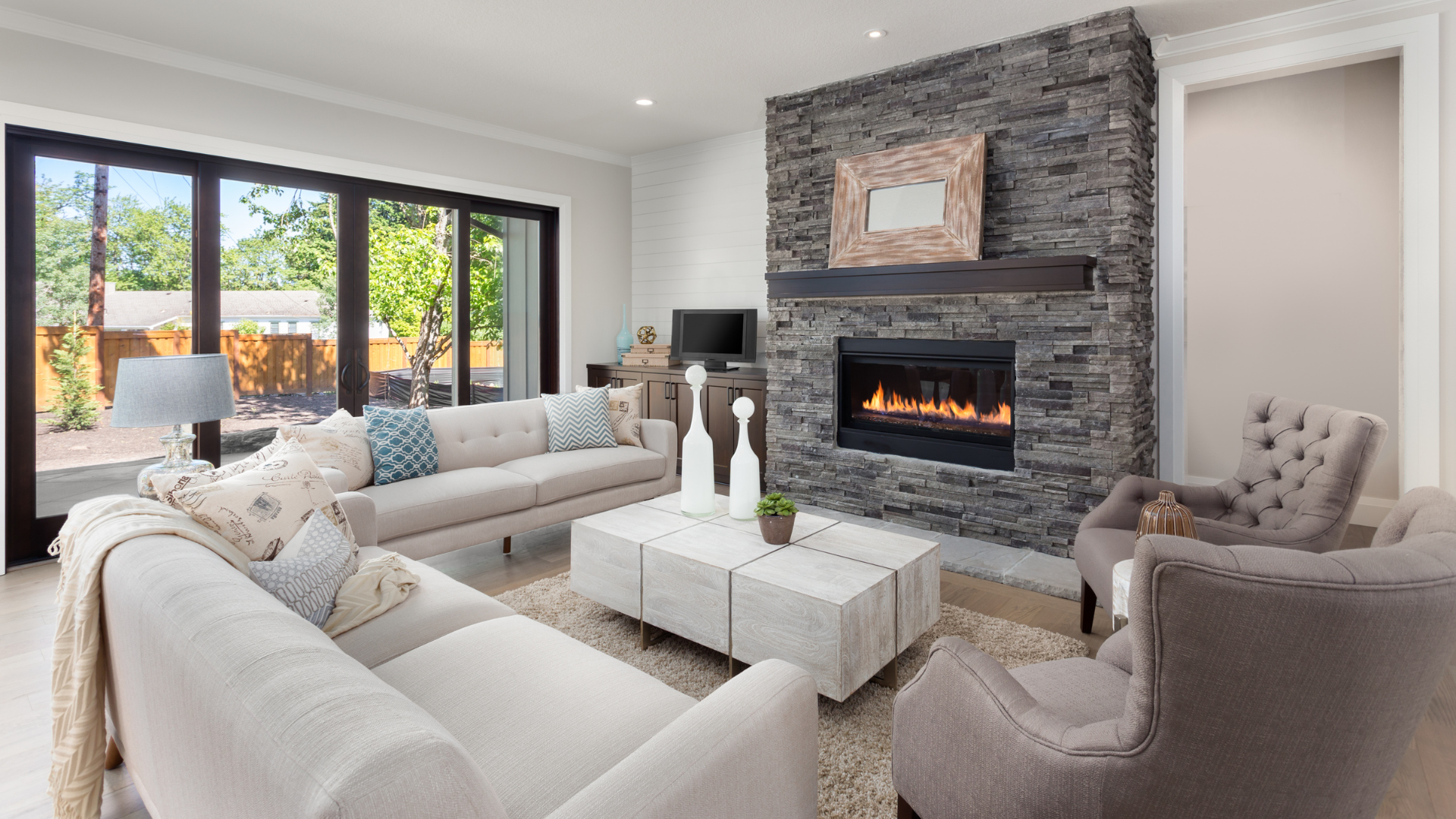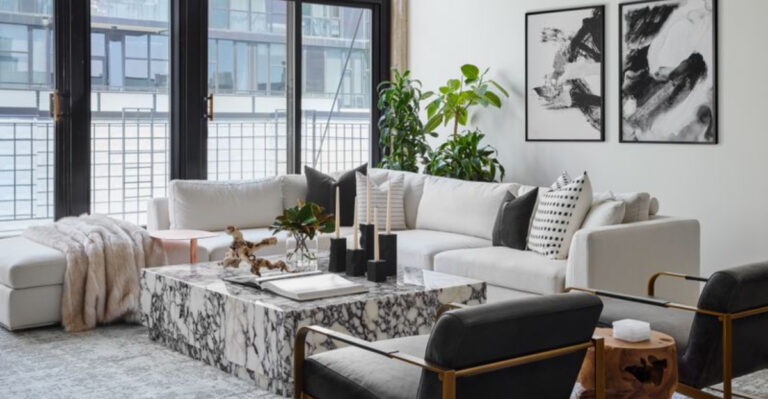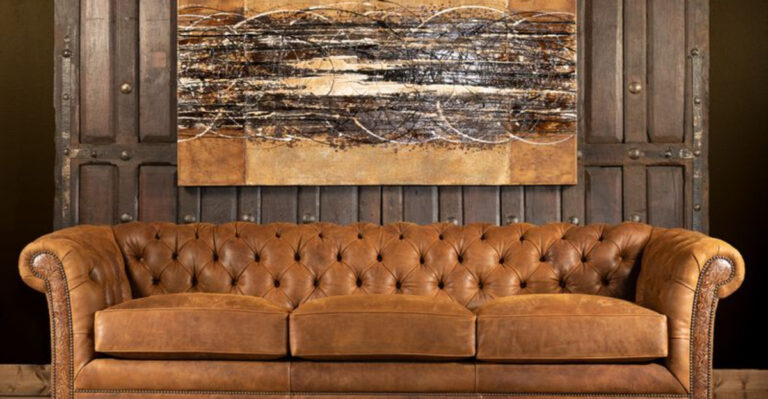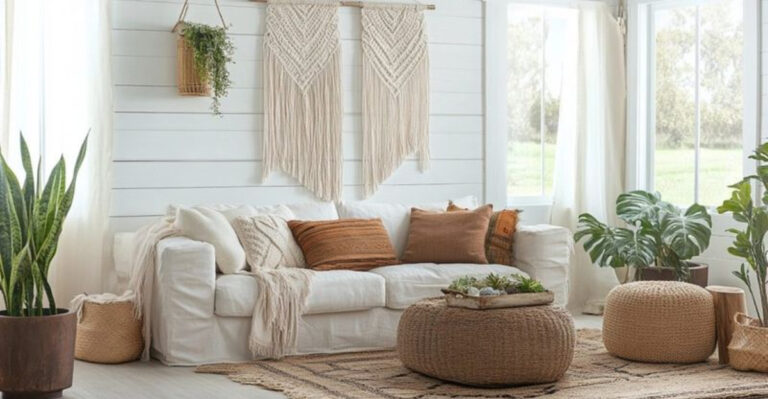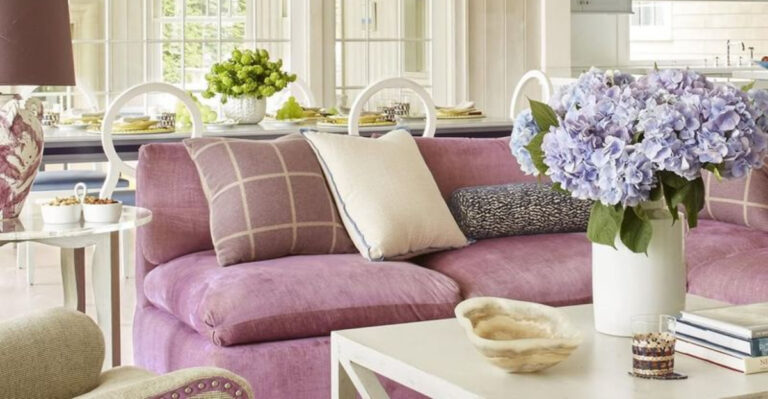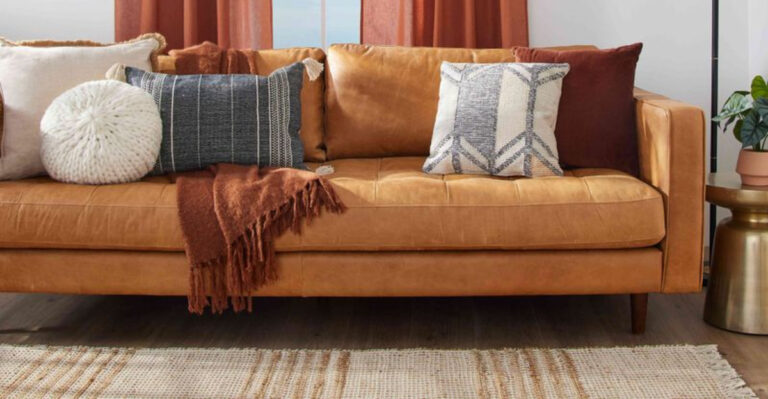15 Helpful Tips To Consider When Decorating A Cozy Living Room (Plus 5 Things I Wish I Had Known Sooner)
Transforming your living room into a cozy sanctuary doesn’t have to be rocket science! Whether you’re starting from scratch or giving your space a refresh, the right approach can make all the difference.
I’ve learned some valuable lessons through trial and error while decorating my own living space, and I’m excited to share these tips that’ll help you create that warm, inviting atmosphere without breaking the bank.
1. Start With A Solid Color Scheme
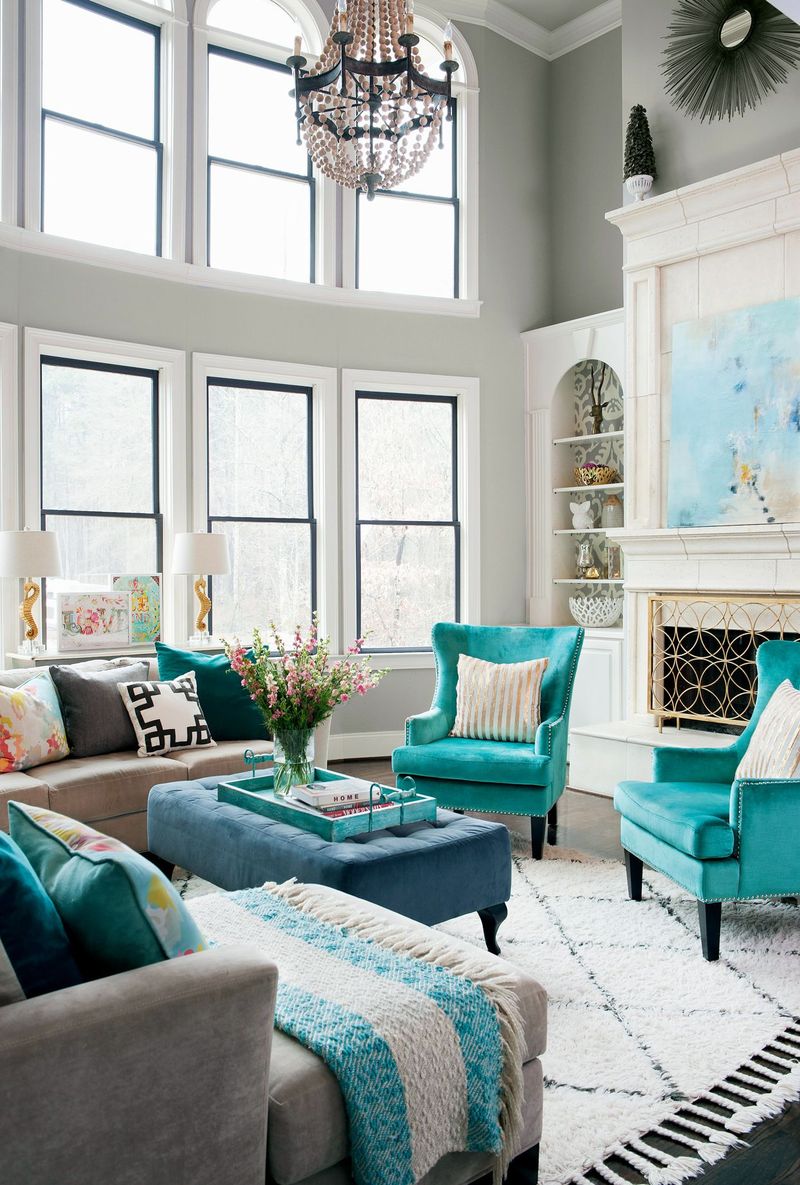
Picking colors might seem simple, but it’s actually the foundation of your entire design! Choose 3-4 complementary hues that make you feel relaxed and happy.
Blues and greens create calm vibes, while warmer tones like terracotta or mustard add that cozy factor we’re all craving.
Don’t forget that neutrals (think cream, beige, or soft gray) make excellent backdrops that let your accent pieces shine.
2. Layer Your Lighting Sources
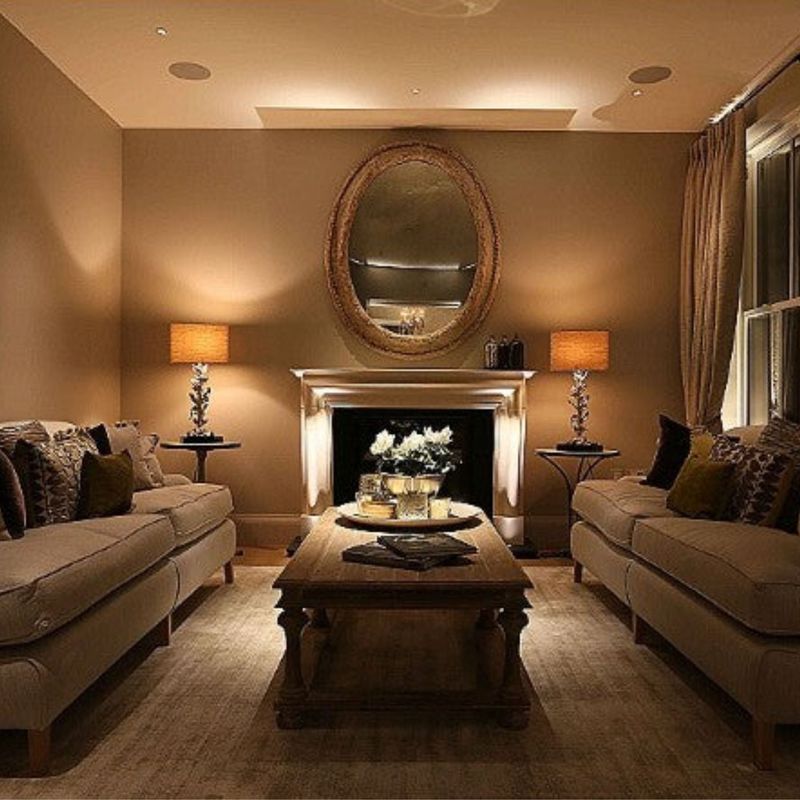
Nobody wants to feel like they’re sitting in an interrogation room! Harsh overhead lighting is the enemy of coziness.
Instead, create layers with floor lamps, table lamps, and maybe even some string lights or candles. The magic happens when you can adjust brightness depending on your mood or activity.
Warm-toned bulbs (look for ones labeled 2700-3000K) cast that golden glow that makes everyone look their best.
3. Invest In A Statement Rug
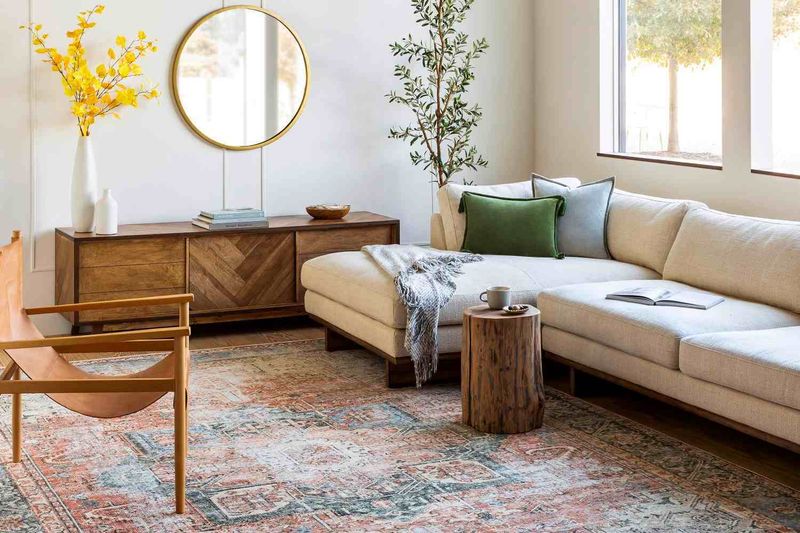
Where’s the first place your feet land when entering your living room? A good rug anchors your space and ties everything together!
Go bigger than you think – when furniture legs can at least touch the rug, the room instantly feels more cohesive. Wool rugs are worth the splurge for high-traffic areas since they’re durable and naturally stain-resistant.
For maximum coziness factor, look for something with a bit of texture or pile you can sink your toes into.
4. Mix Up Your Textures
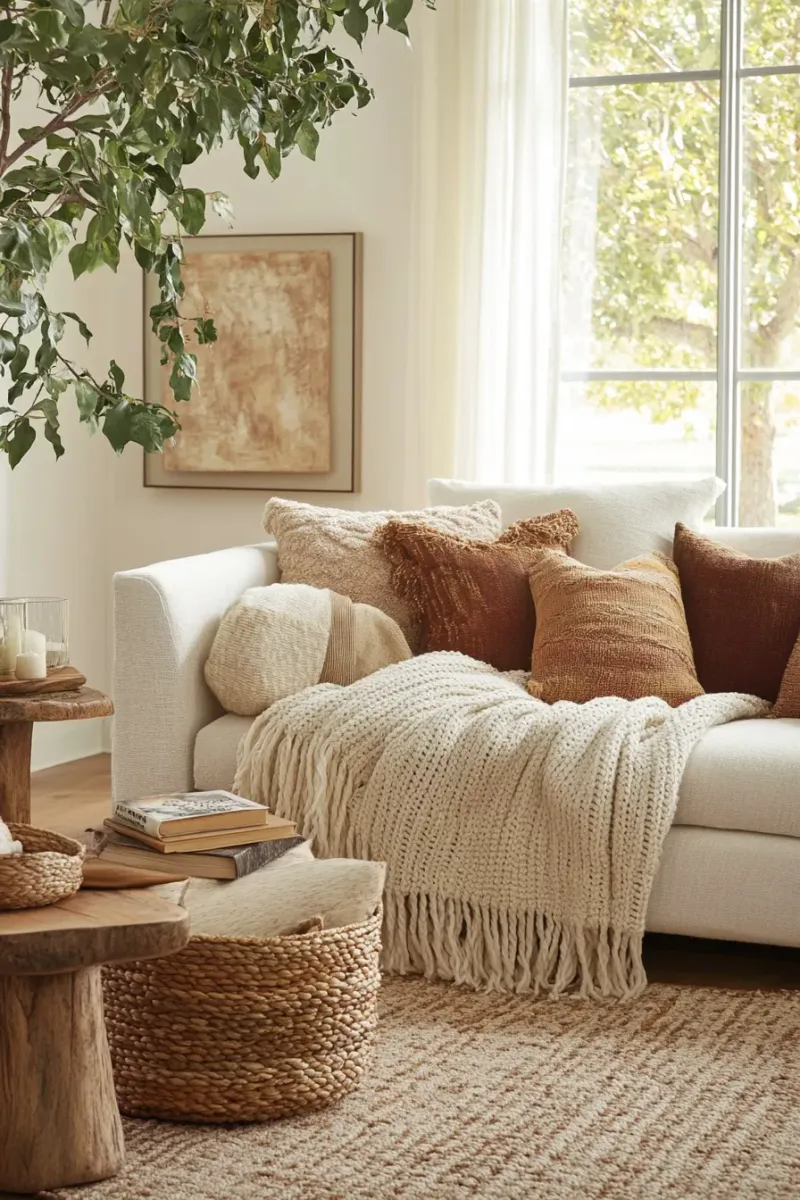
Texture is the secret ingredient that makes designer rooms pop! Think of your space as a sensory playground – mix smooth with rough, shiny with matte, and soft with structured.
Toss a chunky knit throw over a leather sofa. Add velvet pillows to a linen chair. Place a glossy ceramic vase on a rough wooden table.
These contrasts create visual interest and depth that flat, one-note rooms simply can’t match.
5. Arrange Furniture For Conversation

Though the TV often becomes the focal point, try positioning your furniture to encourage actual human interaction!
Create a conversation circle where people can comfortably see and hear each other. The magic measurement to remember: keep seating pieces no more than 8 feet apart.
Any further and you’ll be shouting across the room! If space allows, pull furniture away from walls to create a more intimate setting that naturally draws people in.
6. Incorporate Natural Elements
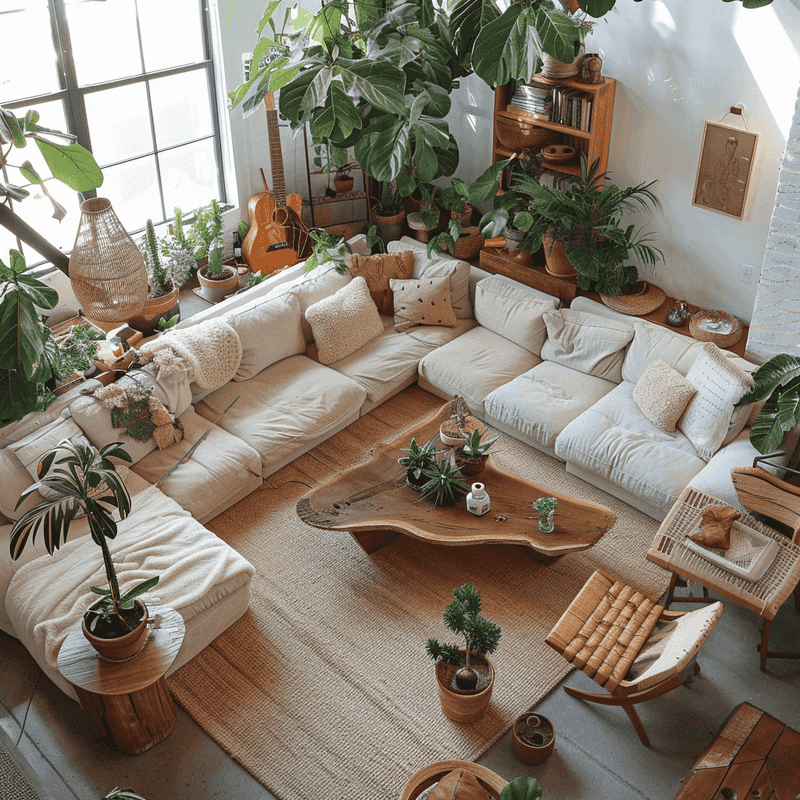
Bringing the outdoors in creates an instant connection to nature that humans instinctively find calming. Houseplants are the obvious choice – they literally breathe life into your space!
Can’t keep plants alive? No judgment here! Try incorporating wood, stone, rattan, or other natural materials through furniture and decor.
Even botanical prints or landscape art can create that biophilic connection our brains crave, making the room feel more grounded and peaceful.
7. Create A Focal Point
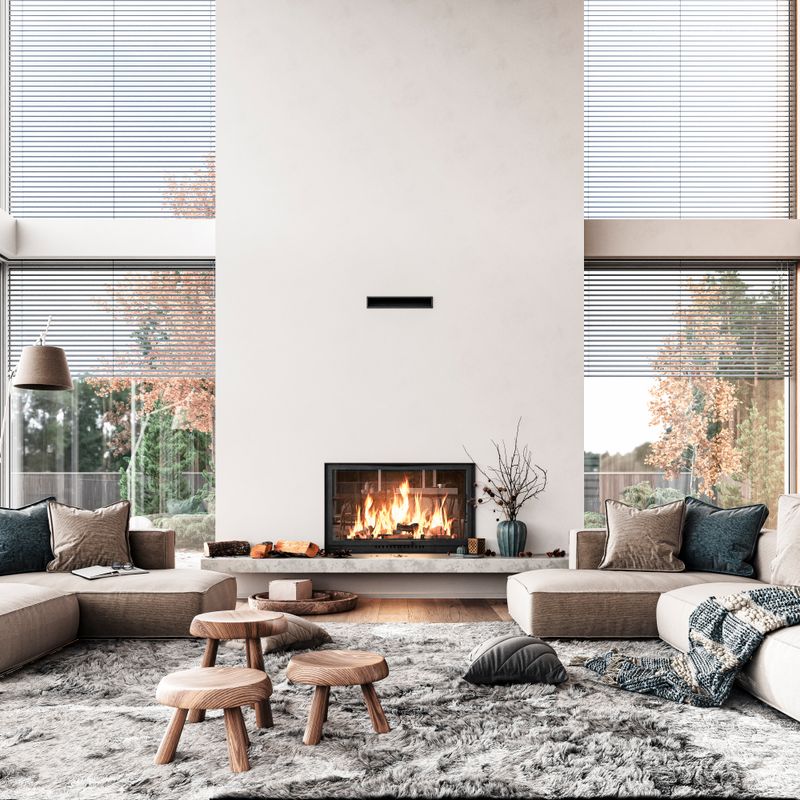
Every room needs that special something that draws your eye! Without a focal point, spaces feel aimless and uncomfortable, even if you can’t put your finger on why.
Fireplaces are classic focal points, but a stunning piece of art, a beautiful window view, or even a dramatic bookshelf can serve the same purpose.
Arrange your furniture to highlight this feature, not compete with it. This gives your room that finished, purposeful feeling that makes it feel complete.
8. Don’t Forget The Power Of Scent
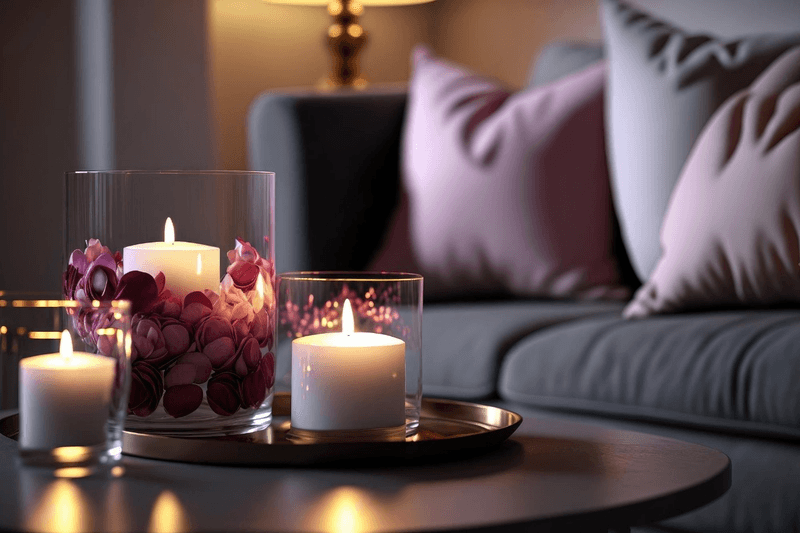
Your nose knows more than you think! Scent is wildly underrated in creating a cozy atmosphere – it bypasses your logical brain and hits your emotions directly.
Vanilla, cinnamon, and woody fragrances tend to register as “cozy” to most people. Try layering scents with candles, diffusers, or even fresh coffee brewing in the kitchen.
Just don’t go overboard – subtle is always better than walking into a wall of fragrance!
9. Scale Your Furniture Properly
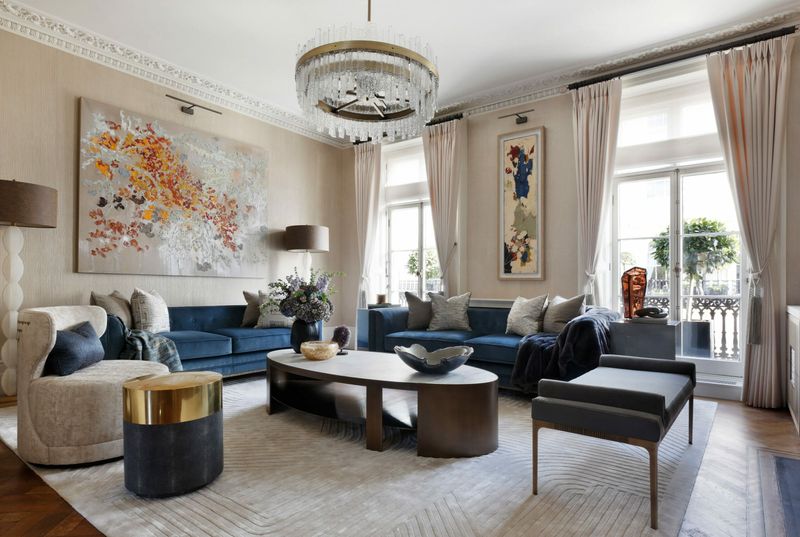
Size matters when it comes to furniture! Oversized pieces in tiny rooms feel claustrophobic, while dainty furniture in large spaces looks lost and uncomfortable.
Measure your room and doorways before shopping – nothing’s worse than a sofa that won’t fit through the door!
A helpful trick: use painter’s tape on the floor to outline where pieces will go. This gives you a visual of how much walking space remains, helping avoid the dreaded furniture obstacle course.
10. Add Personal Touches
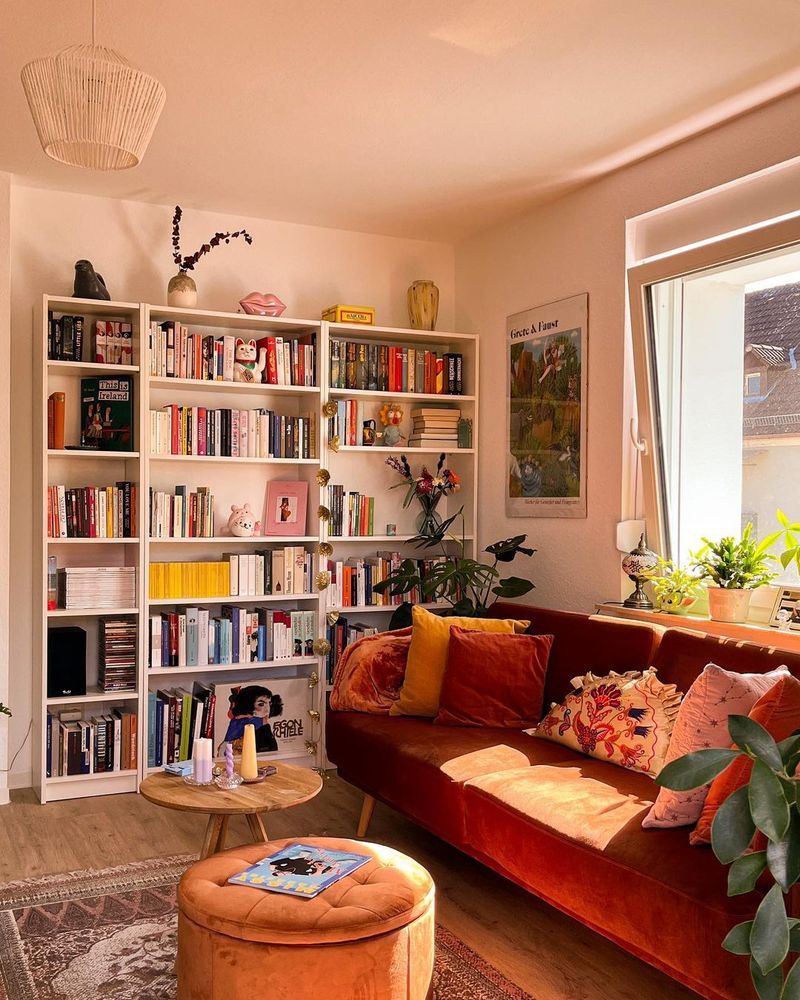
Generic rooms feel like hotel lobbies – pleasant but forgettable. Your space should tell YOUR story!
Family photos, travel souvenirs, or that weird art piece you love (even if no one else gets it) add personality that can’t be replicated.
Group smaller items into collections rather than scattering them around, which can look cluttered. These personal elements create conversation starters and make your space uniquely yours.
11. Balance Hard And Soft Surfaces
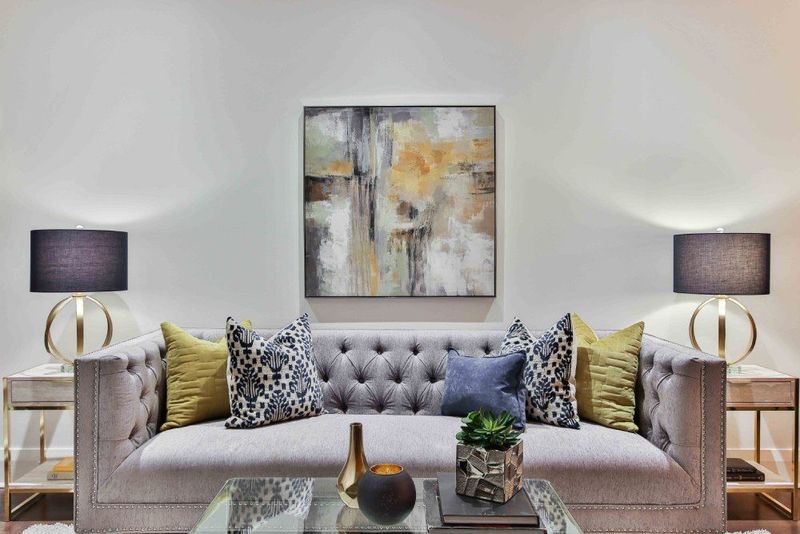
Too many hard surfaces make a room feel cold and echoey. Too many soft elements and it becomes a mushy, undefined space.
The key is balance! If you have hardwood floors and lots of wooden furniture, soften things with upholstery, curtains, and textiles.
Conversely, if you’ve gone overboard with plush items, introduce some structure with metal accents, glass, or polished wood surfaces. This creates that perfect tension between comfort and visual interest.
12. Embrace Negative Space

Horror vacui – the fear of empty space – leads many of us to overfill our rooms. But breathing room is essential for a peaceful atmosphere!
Resist the urge to fill every surface and corner. Your eyes need places to rest between points of interest.
This doesn’t mean going minimalist if that’s not your jam – just be intentional about leaving some empty zones. Your brain will thank you for the visual breaks!
13. Consider Traffic Flow

Nothing breaks cozy vibes faster than constantly bumping into furniture! Map out how people naturally move through your space before finalizing your layout.
You’ll want at least 30 inches for walkways, though 36-42 inches is even better. Watch for sneaky traffic blockers like coffee tables placed too close to seating or rugs that bunch up under doors.
Good flow makes your room feel larger and more harmonious, even if you can’t immediately identify why.
14. Layer Window Treatments
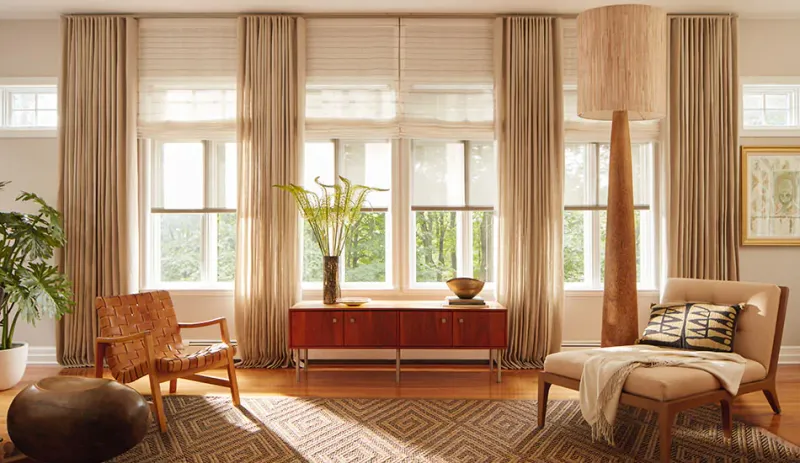
Windows deserve more than just basic blinds! Layered window treatments offer flexibility for privacy, light control, and serious style points.
Start with practical elements like blinds or shades for privacy, then add curtains for softness and visual interest. Hanging curtains higher and wider than the actual window creates an illusion of larger windows and higher ceilings.
Bonus: proper window treatments improve temperature regulation, potentially saving on energy bills!
15. Incorporate Throw Pillows Strategically
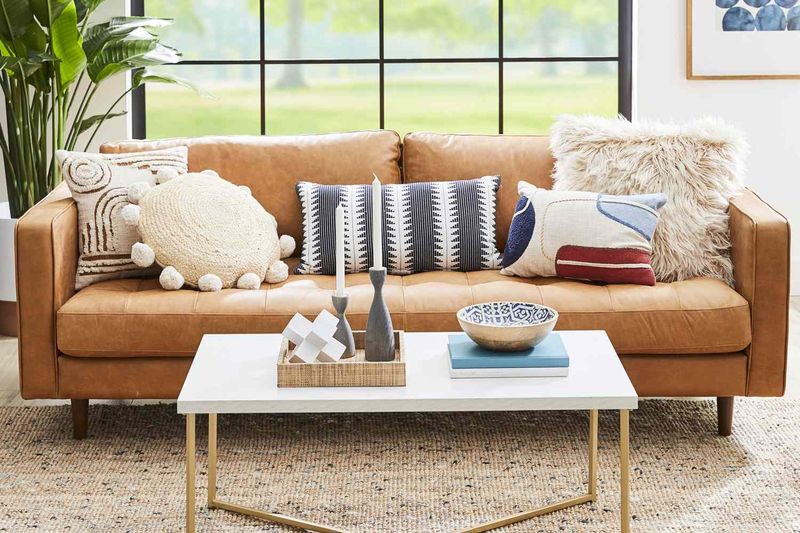
Throw pillows aren’t just decorative – they’re functional comfort boosters! They support your lower back, prop up your arms, and provide that squishable factor that screams “cozy.”
For a designer look, try the odd-number rule: groups of 3 or 5 pillows rather than pairs. Mix sizes, with larger pillows (22-24 inches) anchoring the corners and smaller ones (18-20 inches) in between.
Don’t go overboard though – you still need room for actual humans to sit!
16. Test Paint Colors Properly
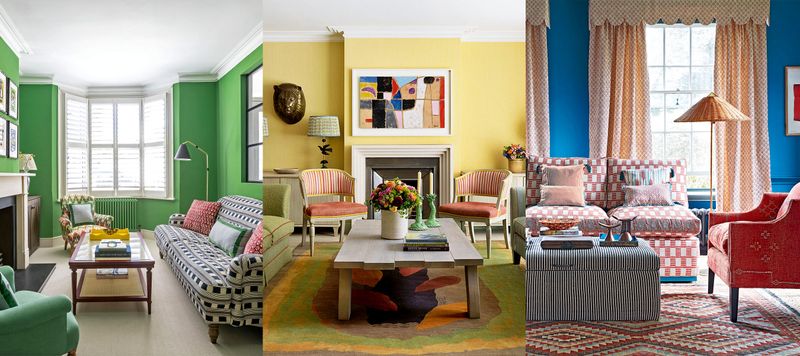
Those tiny paint swatches are practically useless! Colors look dramatically different depending on your lighting, room size, and surrounding elements.
My biggest regret was painting an entire room “warm beige” that turned out distinctly pink once on all four walls.
Save yourself the headache by buying sample pots and painting large swatches (at least 2ft square) on multiple walls. Check how they look at different times of day before committing.
17. Real Plants Aren’t Always Better
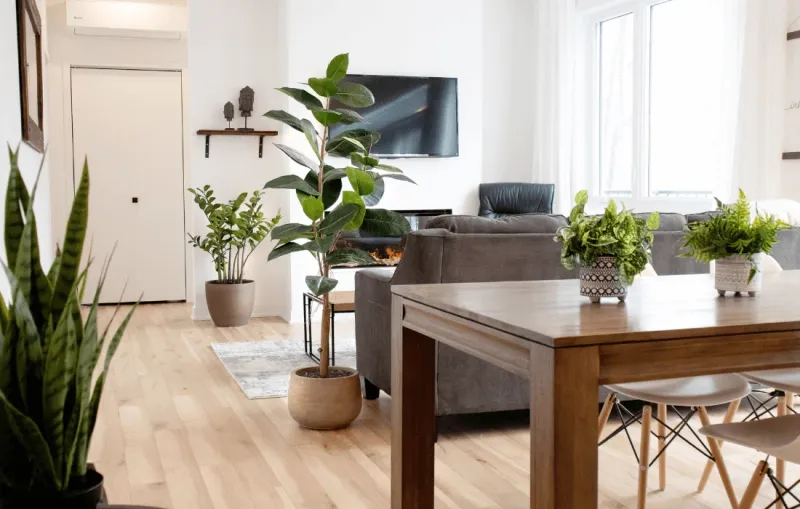
Plant snobs might disagree, but fake plants have come a LONG way! After losing my fifth fiddle leaf fig (those temperamental divas), I finally embraced high-quality faux options in difficult spots.
Modern artificial plants use silicone and realistic textures that look convincing even up close. They’re perfect for dark corners, high shelves, or when you travel frequently.
Mix them with some real, easy-care plants like pothos or snake plants for that perfect low-maintenance greenery balance.
18. Rugs Need Pads
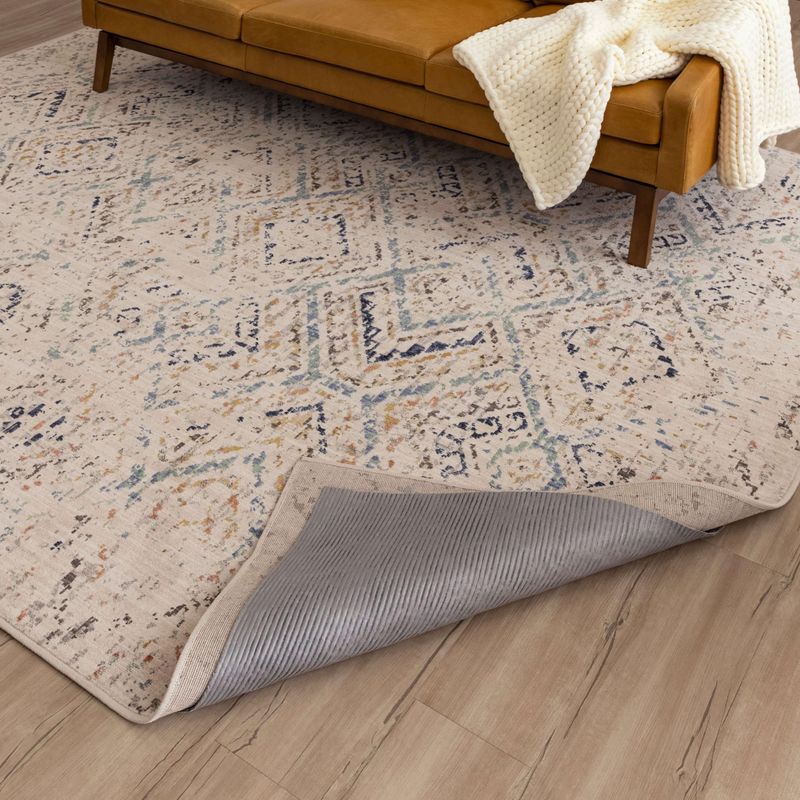
Skipping the rug pad seemed like a smart money-saving move… until my beautiful new rug started sliding around like it was on ice skates!
Not only was it dangerous, but the constant friction damaged both the rug and my floors. A good rug pad prevents slipping, adds cushioning, extends your rug’s life, and improves sound absorption.
They’re especially important on hard surfaces like wood or tile. The right pad thickness depends on your specific needs – thicker for comfort, thinner for low-profile doors.
19. Measure Three Times
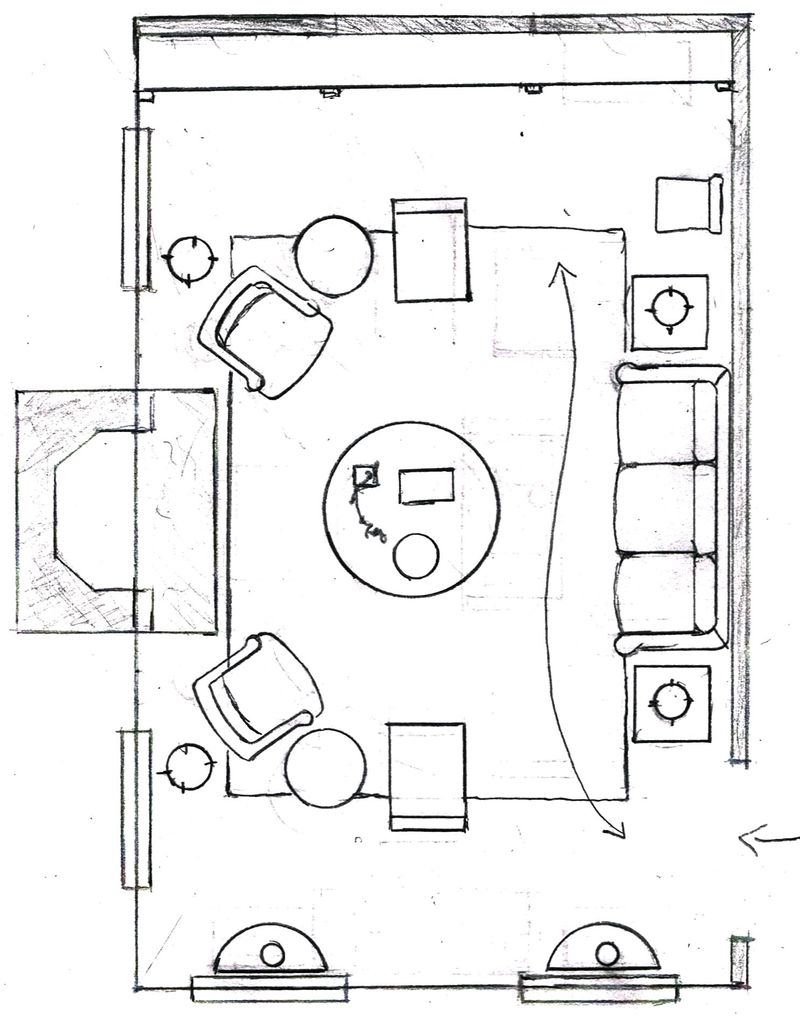
“It’ll probably fit” are dangerous last words when furniture shopping! I learned this lesson the hard way after buying a gorgeous sectional that technically fit in my living room – but made it impossible to open the patio door fully.
Measure your space, doorways, stairwells, and elevators. Then measure again. Create a scaled floor plan (apps like Magicplan make this easy) before purchasing large pieces.
Factor in space for doors, windows, radiators, air vents, and comfortable pathways that won’t leave you sideways-shuffling through your own home.
20. Good Lighting Transforms Everything

For years I blamed my “ugly” furniture when the real culprit was terrible lighting! Even gorgeous, expensive pieces look flat and uninspiring under harsh overhead lights.
Investing in quality lighting makes EVERYTHING look better – your furniture, your wall color, and yes, even your face! Replace cool-toned bulbs with warm ones (especially in lamps at eye level).
Add dimmers wherever possible for ultimate control. When your lighting game is strong, even budget furniture can look surprisingly high-end.

